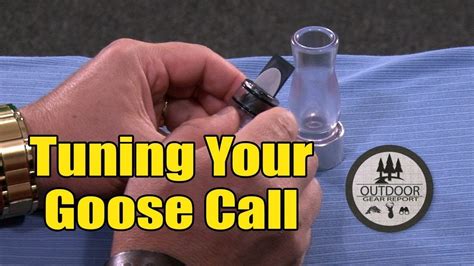How to Make Your Goose Call Sounds More Realistic
Calling geese effectively requires more than just blowing air through a call; it demands a deep understanding of goose vocalizations and the ability to replicate them convincingly. A realistic goose call can be the difference between a successful hunt and a frustrating day in the field. This article will delve into the techniques and nuances necessary to make your goose call sound more lifelike, helping you attract those wary birds.
Understanding Goose Vocalizations
Before you even touch your goose call, you need to understand the sounds geese make. Different calls communicate different messages. Mastering these variations is key to sounding convincing. Listen to recordings of geese in their natural habitat. Pay close attention to the subtle variations in tone, pitch, and rhythm. Note the different calls used during feeding, resting, and alarm situations. This auditory learning is invaluable.
Mastering the Basics: Breath Control and Tongue Placement
The foundation of a realistic goose call lies in your breath control and tongue placement. Many beginners struggle with inconsistent sounds due to improper breathing techniques. Practice consistent, controlled breaths, using your diaphragm rather than just your chest. A steady airflow is crucial for smooth, realistic tones.
Experiment with different tongue positions to manipulate the pitch and tone. A slightly curled tongue can produce a higher pitch, while a flatter tongue creates lower sounds. The subtle adjustments in tongue placement are what separate a mediocre call from a masterful one.
Common Goose Call Sounds and How to Replicate Them
H2: How do I make a feeding call on a goose call?
The feeding chuckle is a soft, rattling sound that geese make while feeding. This requires a loose, relaxed throat and a gentle, airy breath. Experiment with varying the speed and intensity of your breaths to mimic the natural variations in a feeding chuckle. Don't over-exaggerate the sound; subtlety is key.
H2: What does a goose alarm call sound like and how to replicate it?
The alarm call is a sharp, high-pitched, often frantic sound geese make when they perceive danger. This requires a quick, forceful expulsion of air, and a higher tongue position. Practice short, sharp blasts to replicate the urgency of this call.
H2: How do I make a goose landing call?
The landing call is a series of soft, low clucking sounds, often accompanied by a soft, drawn-out whistle. This requires a controlled breath and precise tongue movement to transition between the clucking and whistling sounds. Practice the transition between these two components smoothly.
H2: How can I improve the realism of my goose call?
Beyond mastering individual calls, consider the overall context. Geese rarely call in isolation. Practice incorporating different calls into a sequence to create a more natural soundscape. For example, you might start with a feeding chuckle, transition into a series of soft clucks, and finish with a brief alarm call to mimic a flock's natural communication.
Practicing and Refining Your Technique
Consistent practice is paramount. Don't expect to become a master caller overnight. Practice in front of a mirror to observe your mouth and tongue movements. Record yourself and compare your calls to recordings of real geese. Identify areas for improvement and refine your technique accordingly.
Beyond the Call: Understanding Goose Behavior
Even the most realistic call won't be effective if you don't understand goose behavior. Consider factors such as wind direction, visibility, and the geese's alertness. Approach your calling setup strategically, blending in with the environment. Understanding their behavior allows you to use your calls at the right time and in the right way, increasing your chances of success.
By diligently practicing the techniques outlined above and focusing on understanding goose behavior, you will dramatically improve the realism of your goose calls, significantly increasing your chances of a successful hunt. Remember, patience and dedication are key to mastering this art.

